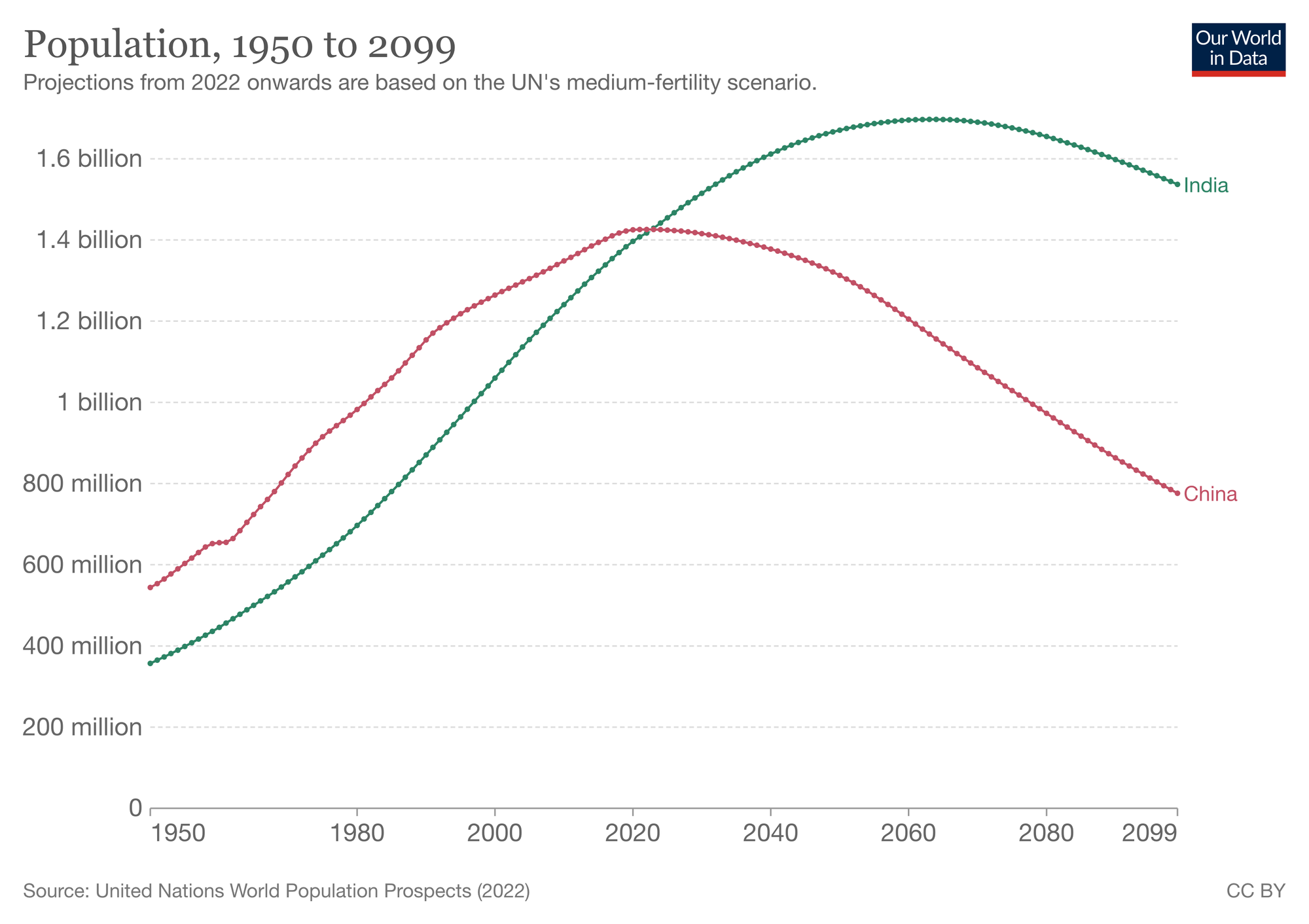10 Billion Strong
The global population hit 7 billion in 2011. Eleven years later, by the end of 2022, another billion, 8 billion total, will be added to the rolls.
As fertility drops globally, the rate of population growth will start to slow. The UN estimates peak population — 10 billion-plus — in fifty or so years.

India and high-growth clusters
One of the key messages from the latest UN population report is the growth embedded in the current population.
Two-thirds of the projected increase in global population through 2050 will be driven by the momentum of past growth that is embedded in the youthful age structure of the current population. Such growth would occur even if childbearing in today’s high-fertility countries were to fall immediately to around two births per woman.
Like wealth, population has always been unevenly distributed between countries. This trend will continue, with a handful of high-growth countries, especially India, accounting for the majority of population gains.
More than half of the projected increase in global population up to 2050 will be concentrated in just eight countries: the Democratic Republic of the Congo, Egypt, Ethiopia, India, Nigeria, Pakistan, the Philippines and the United Republic of Tanzania.

The backdrop for all-things population is what the earth will look like for those 10 billion people. The forecasts — marked by scorched cities and wars over resources — are bleak.





